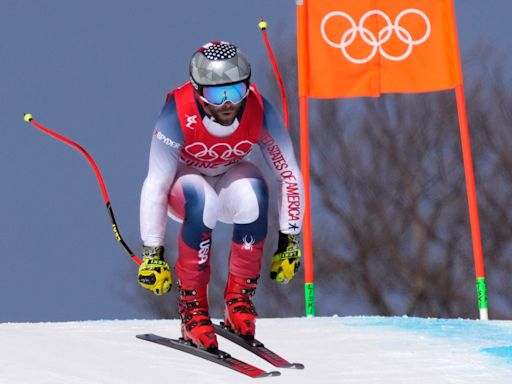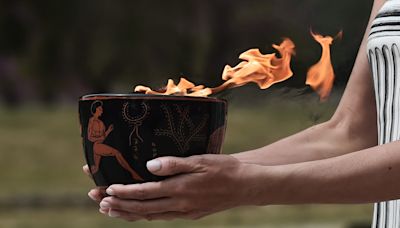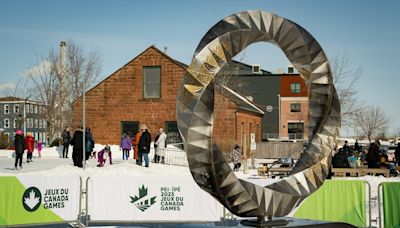Search results
People also ask
When did the Olympic Winter Games start?
Why were the Winter Olympics held in a different year?
What is a Winter Olympics?
How did the first Olympic Games start?
The Winter Olympic Games (French: Jeux olympiques d'hiver) is a major international multi-sport event held once every four years for sports practiced on snow and ice. The first Winter Olympic Games, the 1924 Winter Olympics, were held in Chamonix, France.
- Overview
- History of the Olympic Winter Games
- Chamonix, France, 1924
- St. Moritz, Switzerland, 1928
- Lake Placid, New York, U.S., 1932
- Garmisch-Partenkirchen, Germany, 1936
Although some skating events were included in the 1908 and 1920 Games, it was not until 1924 that the Winter Games were accepted as a celebration comparable to the Summer Games and given the official blessing of the International Olympic Committee (IOC).
Although some skating events were included in the 1908 and 1920 Games, it was not until 1924 that the Winter Games were accepted as a celebration comparable to the Summer Games and given the official blessing of the International Olympic Committee (IOC).
The Chamonix Games were originally staged as International Winter Sports Week, a meet sponsored by the IOC but not sanctioned as an official Olympic Games. Well-organized and equipped with new facilities, the event was a success and led the IOC to amend its charter in 1925, establishing the Winter Games. Chamonix was thereafter recognized as the first Winter Olympics.
Some 250 athletes representing 16 countries attended the Games, competing in 16 events. The 11 female athletes participated in the figure skating competition, the only sport open to women until the addition of the Alpine (skiing) combined in the 1936 Olympics in Garmisch-Partenkirchen, Germany.
The second Winter Olympics, held at a ski resort, were marred by bad weather. The culprit was the foehn, a strong wind that carried with it warm air, causing temperatures to soar above 75 °F (24 °C) some afternoons. Numerous events were rescheduled, and one contest—the 10,000-metre speed skating event—was canceled, though some books list American Irving Jaffee, who held the lead after the first run, as the winner. St. Moritz also marked the return of German athletes, who had been banned from Olympic competition following World War I; the country claimed only one medal, a bronze in the four-man bobsled.
Standouts among the 464 competing athletes were speed skater Clas Thunberg (Finland) and Nordic skier Johan Gröttumsbråten (Norway), who each won two gold medals. In figure skating Gillis Grafström (Sweden) captured his third title, while 15-year-old Sonja Henie (Norway) won the first of her three gold medals. Canada continued to dominate in ice hockey. The team’s obvious superiority led officials to devise a new tournament format in which Canada went straight to the final round, awaiting the winners of the three pools. Canada still won, posting victories over Sweden (11–0), Switzerland (13–0), and Great Britain (14–0). St. Moritz featured the debut of skeleton sledding, a contest in which competitors, lying headfirst on sleds, raced down the 1,213-metre- (0.75-mile-) long Cresta Run.
The worldwide economic depression cast a shadow over the third Winter Olympics. Only 17 countries attended, represented by some 250 athletes, over half of whom were from Canada and the United States. The Games generated little revenue, and organizers, who had built a new stadium and bobsled run, suffered huge financial losses.
Controversies surrounding the speed skating competition drew much attention. Pack-style skating was introduced, whereby the competitors raced each other instead of skating in pairs and racing against the clock. Europeans, unfamiliar with this style, fared poorly as two Americans, Irving Jaffee and Jack Shea, swept the events, each winning two gold medals. Legendary Finnish speed skater Clas Thunberg refused to compete, and pack skating was dropped from Olympic competition following the Lake Placid Games. Turmoil also ensued in the 1,500- and 10,000-metre events. In the former, judges stopped the second heat, claiming the skaters were “loafing,” and ordered them to start over. In the 10,000-metre event, a rule requiring each contestant to assist in setting the pace led to the disqualification of three skaters in the first heat, though protests led to the contest’s being rerun.
Held in a Bavarian resort, the fourth Winter Olympics were opened by Chancellor Adolf Hitler. Although not as politically charged as the 1936 Summer Games in Berlin, the event was manipulated by the Nazi regime, which suppressed unfavourable press coverage and staged lavish celebrations to mark the openings of new facilities. The IOC had forbidden Germany to exclude Jews from its Olympic team, but only one Jewish athlete represented the country—Rudi Ball, who was invited to participate on the ice hockey team after having fled Germany months before.
For the first time female athletes were allowed to compete in a sport other than figure skating with the inclusion of the Alpine combined, an event held over several days, which featured the downhill and two slalom runs. Over Swiss and Austrian protests, the IOC ruled that hotel ski instructors were professional athletes and thus ineligible. Germany collected the gold and silver in both the men’s and the women’s competition.
Nov 4, 2021 · The Winter Olympics are an international sports competition held every four years. The Games feature cold-weather events on snow (skiing, snowboarding, biathlon) and ice (figure skating, hockey...
The history of the Games is incredibly rich and spans millennia. The first written evidence of the official Games dates from 776 BC, when the Greeks began measuring time in Olympiads, or the duration between each edition of the Olympic Games. The first Olympic Games were held every four years in honour of the god Zeus.
Jan 6, 2010 · From the 8th century B.C. to the 4th century A.D., the Games were held every four years in Olympia, located in the western Peloponnese peninsula, in honor of the god Zeus. The first modern...
2 days ago · Origins of the Olympic Winter Games, The first organized international competition involving winter sports was introduced just five years after the birth of the modern Olympics in 1896. This competition, the Nordic Games, included only athletes from the Scandinavian countries and was held quadrenially in Sweden, beginning in 1901.
In Origins of the Olympic Winter Games. …Stockholm or stage a separate Winter Olympics in the same year. Sweden, concerned that such a move would jeopardize the Nordic Games, refused. Germany supported plans to stage a competition of winter events in early 1916 as part of the Games of the VIth Olympiad scheduled for Berlin later that… Read More.





